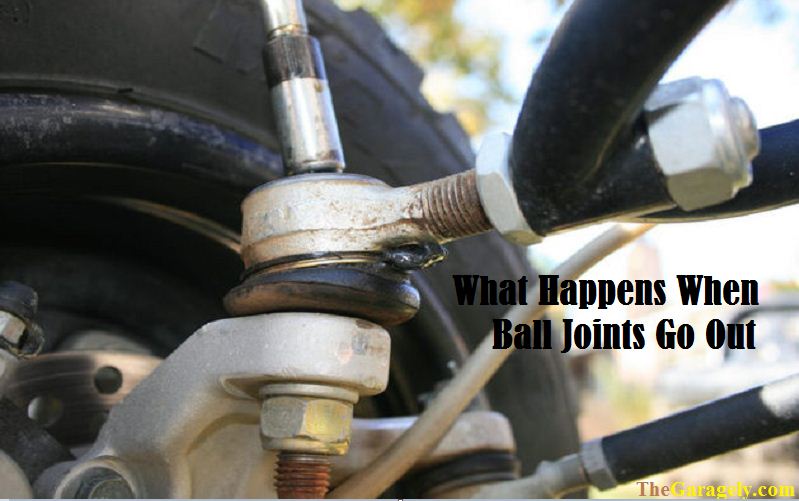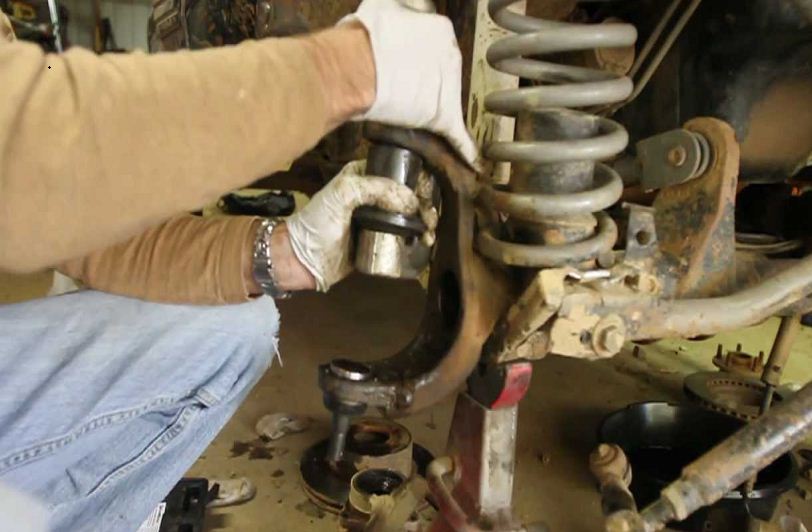
Ball joints are an important part of your vehicle’s steering system. They help to keep your car driving smoothly on the road. Ball joints don’t last forever. Replacing them in a timely manner can help prevent undue wear and tear on your car and lengthen your car’s useful life.
Quick Navigation
- 1 Where are ball joints located?
- 2 How long do ball joints last?
- 3 How will I know if the ball joints in my vehicle are going bad?
- 4 Are ball joints expensive to replace?
- 5 Can I drive my vehicle while the ball joints are bad?
- 6 What can happen when ball joints go out?
- 7 How can I keep my vehicle’s ball joints in good working order?
- 8 #What Happens When Ball Joints Go Out (Practical Video)
Where are ball joints located?
Ball joints are round bearing that connects the control arms to the steering knuckles. They are in just about every car, truck and other types of road vehicles that you see today. They operate just like the hip joints in our bodies.
The control arm allows for up and down motion, while the steering knuckles turn the respective wheels when you turn the steering wheel in your vehicle. Different road conditions and vehicle loads can greatly affect the suspension and ball joints. Depending on the type of car or truck you have, you may have both upper and lower ball joints. Lower ball joints bear the brunt of potholes, uneven surfaces and the weight of the vehicle. They usually wear out quicker than upper ball joints because of the force of the impacts that they are often required to take.
How long do ball joints last?
Ball joints can last for 200,000 miles or more. Their longevity depends on the type of terrain you drive on and the amount of regular driving that you do. Most experts recommend having your vehicle’s ball joints replaced after about 75,000 to 150,000 miles.
How will I know if the ball joints in my vehicle are going bad?
If your car or truck starts to make a sudden clunking noise while you are driving, it may be time to replace the ball joints. Other tell-tale signs include uneven tire wear, or if you feel your vehicle starting to pull to the left or right when you go over bumps or other difficult terrains. Ball joints should also be replaced when they exceed the vehicle manufacturer’s maximum allowance for normal movement.
Another common problem is when ball joints lock up. When that happens, the movement that joint has to be transferred somewhere else. This usually winds up causing added stress to the control arm bushings. Each of these bushings is made of rubber. They can wear out very easily and can be costly to replace.
Are ball joints expensive to replace?

The average cost for replacement ball joints and other required parts can run about $200 to $400, depending on the make, manufacturer and model year of your vehicle. You can replace them yourself, or you can take your car to a qualified mechanic to do the work for you. If you’re having someone else replace your ball joints, you can probably add on another $50 to $150 for labor costs. If you’re replacing control arm bushings, expect to pay around $300 to $500 or more for replacement parts and another $50 to $150 for labor if you’re not replacing them yourself.
Can I drive my vehicle while the ball joints are bad?
You can realistically drive your vehicle for a week or two when the ball joints are bad. However, this is not recommended. Continuing to drive with bad ball joints can cause continued vibration felt through your steering wheel, uneven tire wear and suspension failure.
What can happen when ball joints go out?
Ball joints can even break if they’re in poor condition. The joint can either break by detaching from the socket or the socket itself can break. Either type of break can cause serious, expensive damage to your car or truck. If a ball joint breaks, your wheel is free to move in any direction. The wheel could turn outwards suddenly and slam against the fender while you’re driving. This can damage your wheel, tire, and fender simultaneously. It could even cause the wheel to come off of your car.
How can I keep my vehicle’s ball joints in good working order?
Whenever you lubricate essential parts in your vehicle, you should also take the time to inspect the ball joints. Make sure that the rubber boots that hold the ball joint in position are in good condition. If they are cracked, torn or worn down completely, the rubber boots and ball joints should probably be replaced. If the ball joint can be greased, use the recommended grease for the task. There are some ball joints that are lubricated for life and cannot be greased. These models tend to wear out faster and can be more expensive to replace in the long run. Some ball joints have built-in wear indicators which make it easy to determine when they need to be replaced. Others you may have to consult your vehicle manual or mechanic for assistance.
Pay attention to the road conditions you are driving in, and don’t hesitate to inspect things or contact your local mechanic if you hear any strange noises or the car doesn’t move in the direction that you want it to go. Keeping your ball joints in good condition can help to increase your vehicle’s useful life, and could even improve the resale or trade-in value. They’re an important component of your steering system, so don’t ignore any problem noises or sounds. It could wind up being a very expensive mistake.
Leave a Reply